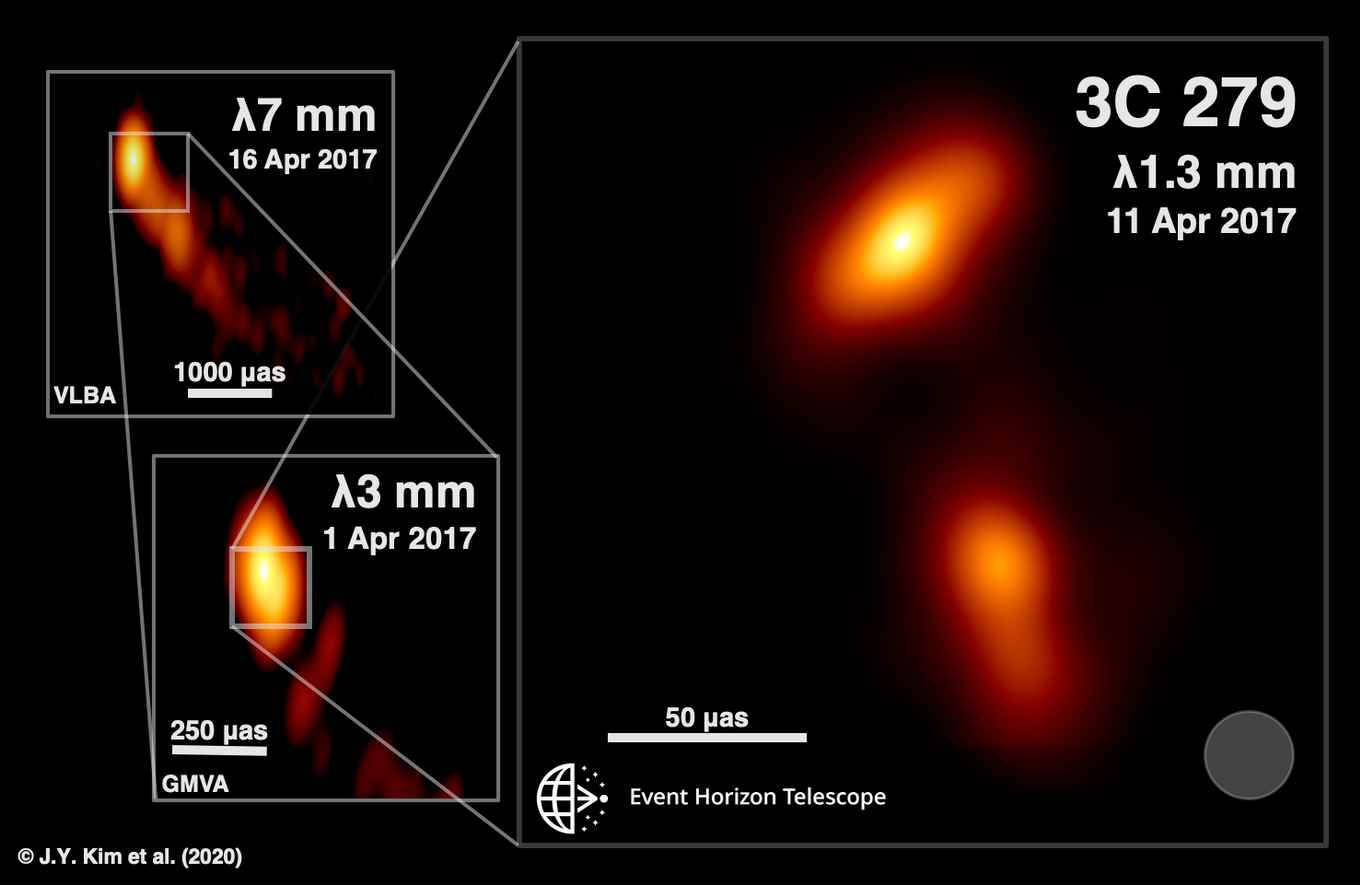Corkscrew-shaped jet appears near black hole in Virgo constellation
8 April 2020

To aid their research, the astronomers used data from the global observations of April 2017. That data had previously been used to capture the first image of the black hole in the M87 galaxy. Now it was used for the jet of 3C 279. Like M87, it is a galaxy in the Virgo constellation.
It has been known for some time that supermassive black holes sometimes create so-called plasma jets. Only, thus far, it was thought that a jet stream was straight. However, thanks to the new measurements, which are more detailed than ever, it seems that the jet stream actually resembles a corkscrew. The jet also turned out to be more dynamic than expected.
Principal researcher Jae-Young Kim of the Max Planck Institute for Radio Astronomy in Bonn is both delighted and surprised: 'It's like opening a series of Russian nesting dolls and finding that the last and smallest doll is suddenly very different than the rest.'
Dutch flavour
In the list of authors, more than a hundred researchers are listed as having worked on the Event Horizon Telescope. Among them are astronomers from Radboud University, Leiden University, the University of Amsterdam, the University of Groningen and ASTRON. Sara Issaoun and Michael Janssen are part of the ‘lead group' of eighteen authors, both from Radboud University Nijmegen. Issaoun and Janssen were mainly involved in calibrating the data.
Partnerships
In order to create the ultra-sharp images of the jet, several telescopes were linked together worldwide. These include ALMA, APEX, the IRAM 30m telescope, the James Clerk Maxwell Telescope, the Large Millimeter Telescope, the Submillimeter Array, the Submillimeter Telescope and the South Pole Telescope. These telescopes themselves often consist of multiple antennas. ALMA, for instance, has 66 antennas.
In the coming period, the researchers will continue analysing the data from the previous measurement campaigns. Unfortunately, this will now require more time than originally expected, due to the fact that the March/April 2020 observation campaign has been cancelled because of the impact of COVID-19.